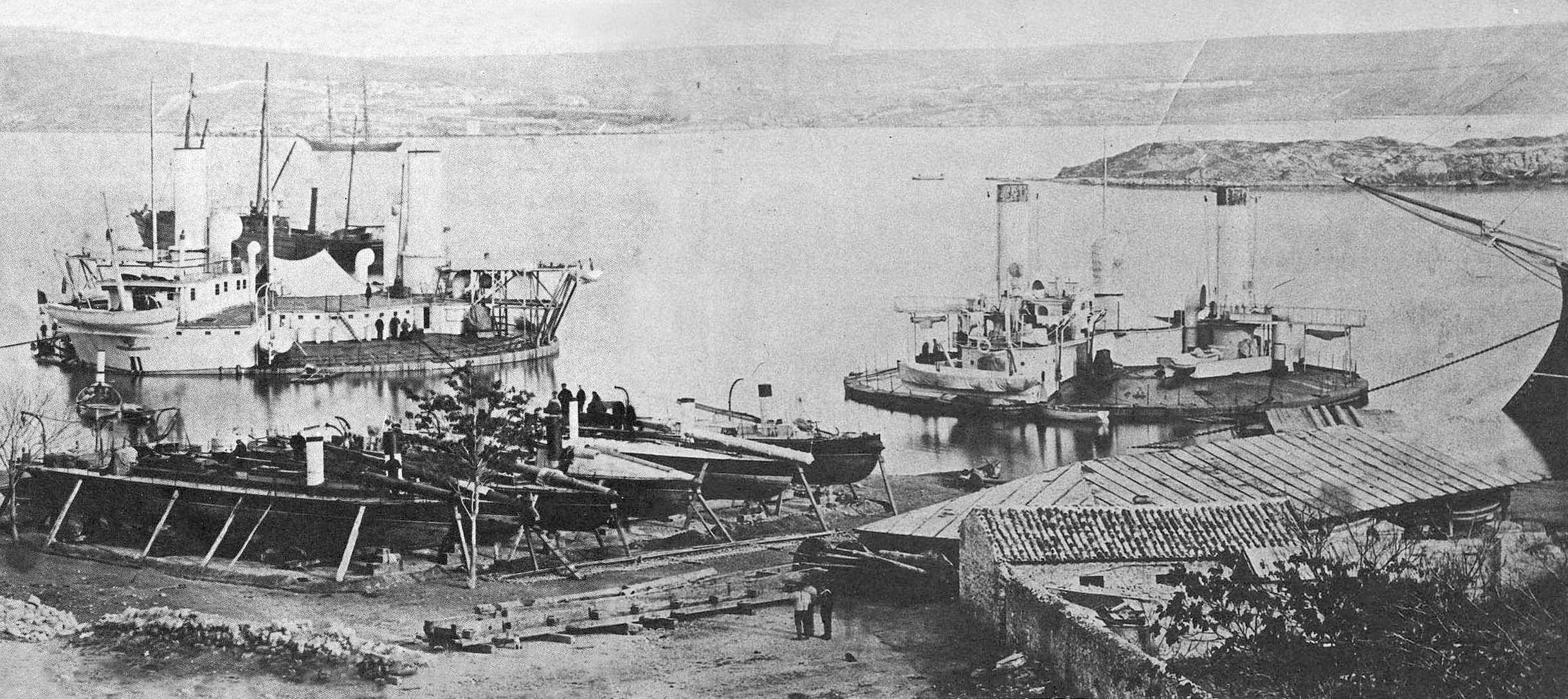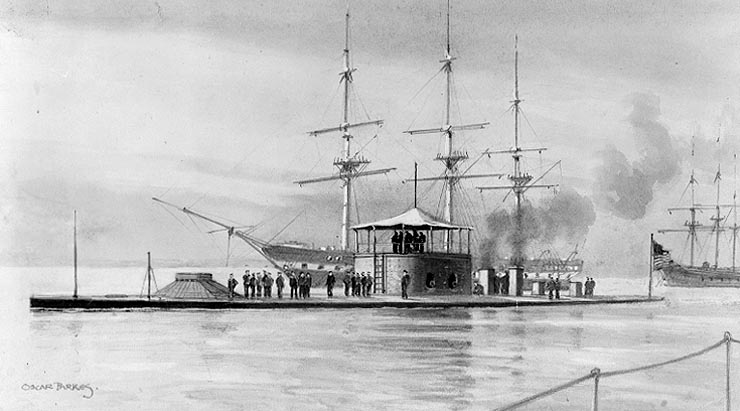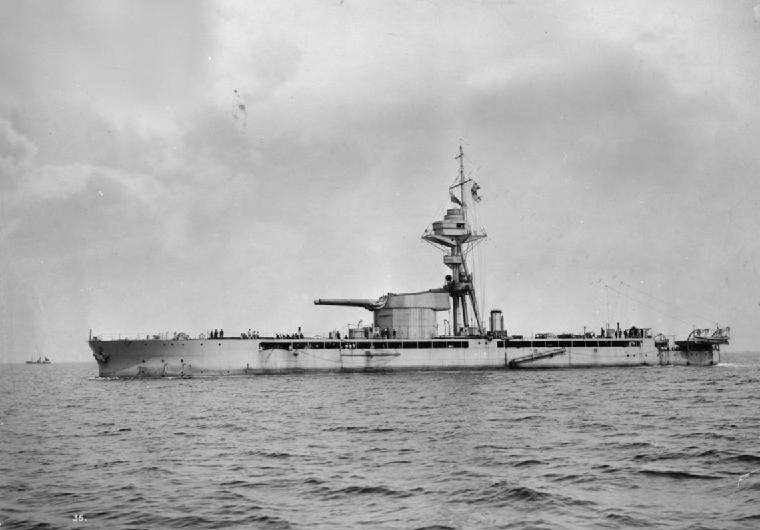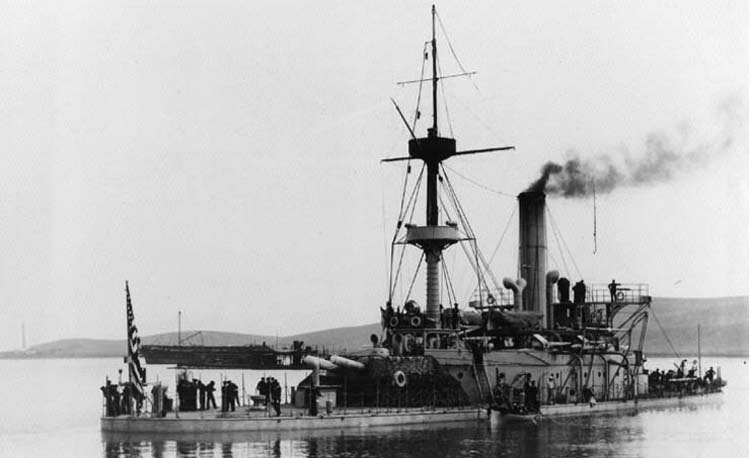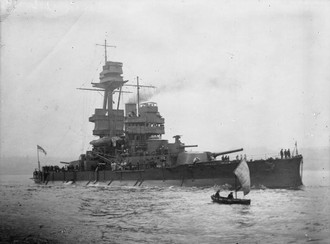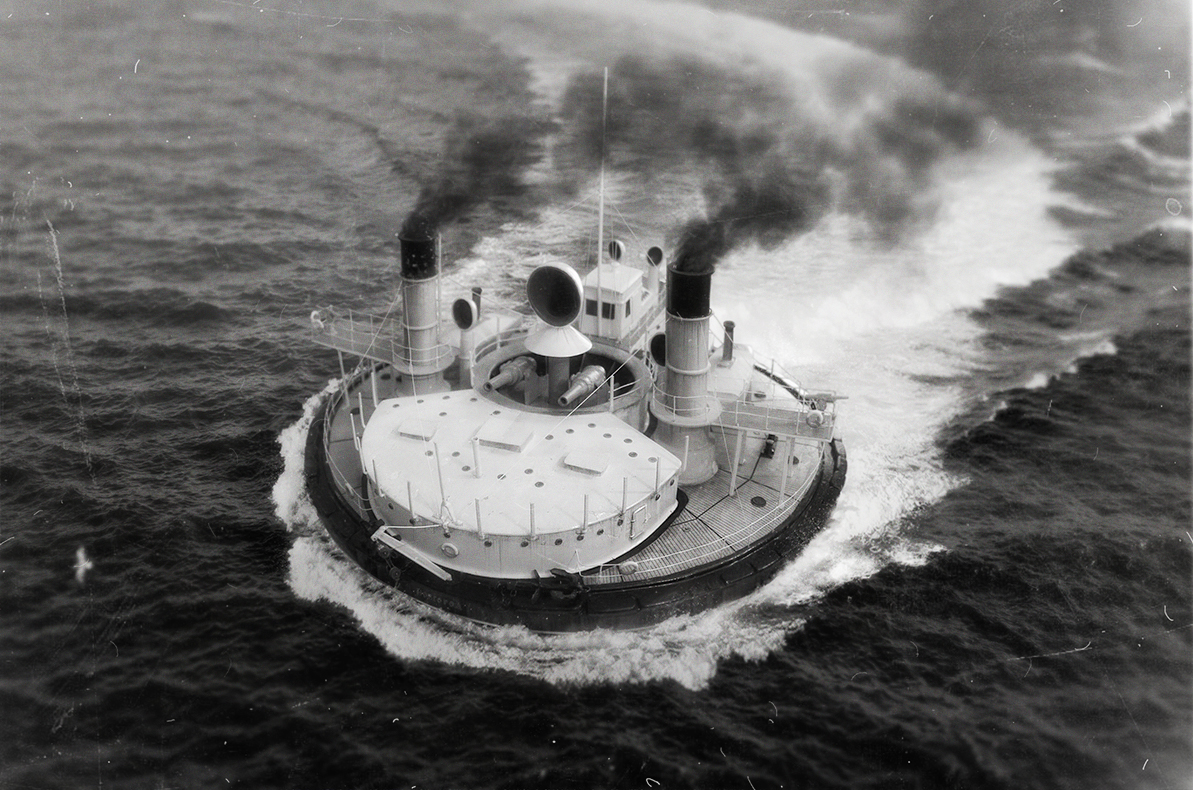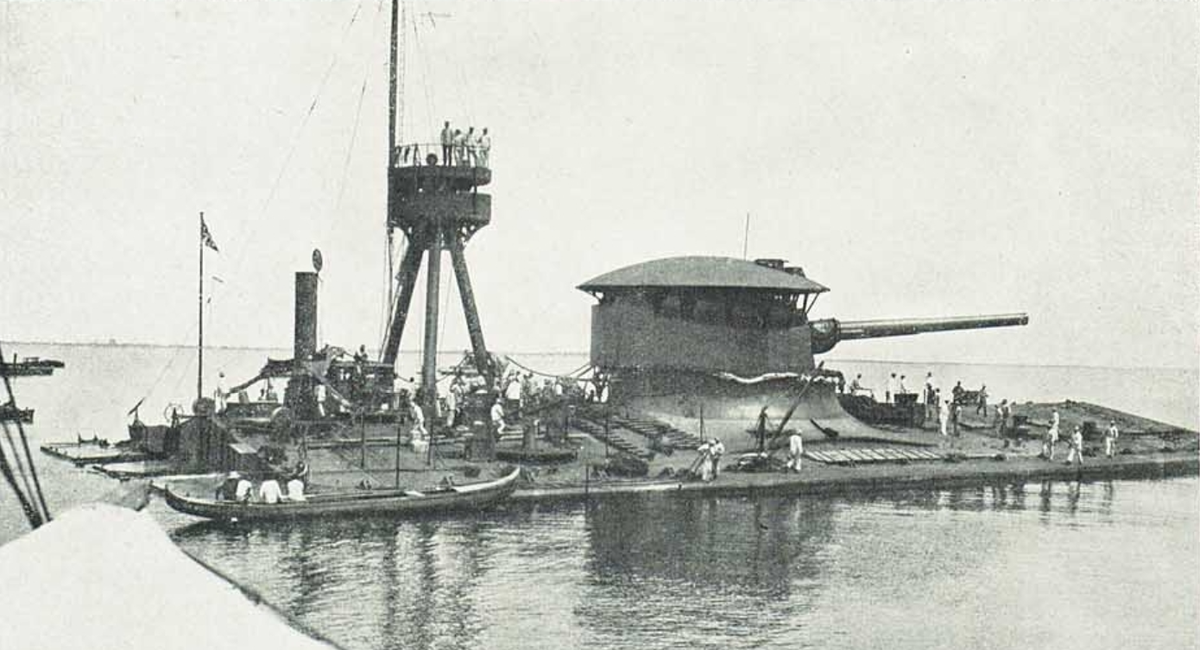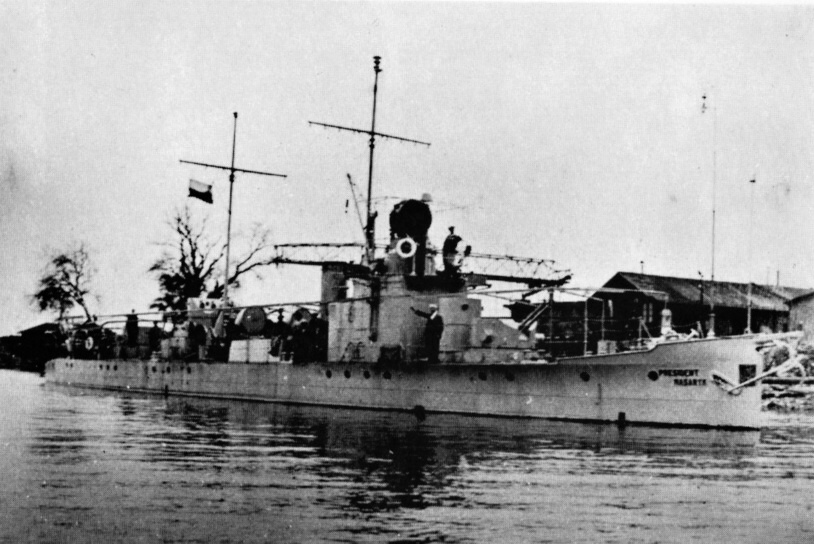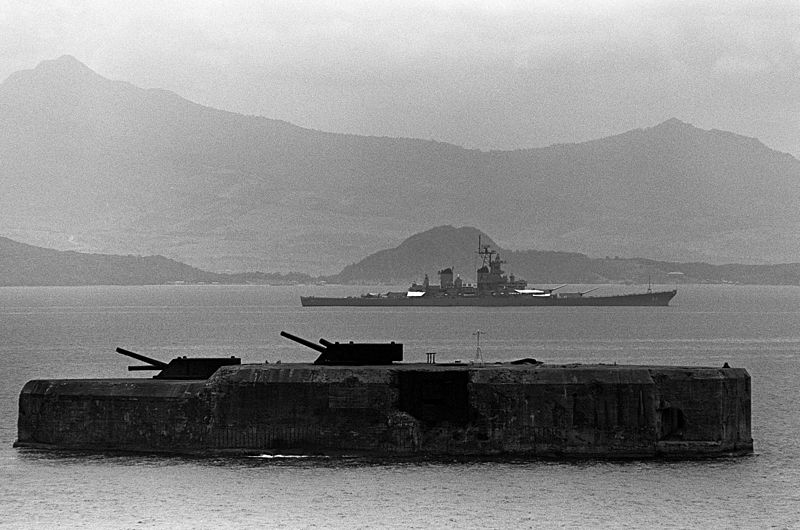As you know, the ships are equally deadly and beautiful: for this reason they are the basis for the modeling community. However, some of them, like the monitors, were simply strange …
What were the monitors?
Monitors were defensive ships, very popular in the one hundred years between the civil war and the Vietnam war. In principle, these were mobile fortresses of various sizes, the purpose of which was limited to operations near ports and coasts. Since they were not expected to sail in the open sea, the engineers had considerable room for maneuver in optimizing the ship’s defenses.
- Less chimneys, as well as cabins for the crew and engines; monitors did not need such a complicated structure.
- In relation to the above, there was plenty of space for guns with calibers close to the large battleships, mounted on a hull similar in size to an average destroyer.
- Due to the fact that the waves on the high seas were not a problem, the hull could be heavily weakened, which significantly reduced its profile and made it difficult to hit.
What are the beginnings of the monitors?
USS Monitor is the name given by the US Navy to the revolutionary ship launched in 1862. At a time when steam transmission was still in its infancy, the usual practice in building warships was to integrate steam engines with the navigation masts and unfolding the guns on both sides; the ship had to maneuver alongside, if it wanted to reach the maximum firepower. The Monitor designer removed the sails without regrets and added heavy metal plates along the entire length of the ship, with 127 mm armor on the belt and 229 mm thick on the superstructure.
Come sapete, le navi sono ugualmente mortali e bellissime: per questa ragione sono la base per la comunità dei modellisti. Tuttavia, alcuni di loro, come i monitor, erano semplicemente strani …
Quali erano i monitor?
I monitor erano navi di difesa, molto popolari nei cento anni tra la guerra civile e la guerra del Vietnam. In linea di principio, si trattava di forti mobili di varie dimensioni, il cui scopo era limitato alle operazioni in prossimità di porti e coste. Poiché non ci si aspettava che navigassero in mare aperto, gli ingegneri avevano un considerevole margine di manovra nell’ottimizzare le difese della nave.
- Meno ciminiere, oltre a cabine e motori per l’equipaggio; i monitor non avevano bisogno di una struttura così complicata.
- In relazione a quanto sopra, c’era molto spazio per i cannoni con calibri vicini alle grandi corazzate, montate su uno scafo di dimensioni simili a un cacciatorpediniere medio.
- A causa del fatto che le onde in alto mare non rappresentavano un problema, lo scafo poteva essere pesantemente indebolito, il che riduceva significativamente il suo profilo e lo rendeva difficile colpire.
Quali sono gli inizi dei monitor?
USS Monitor è il nome dato dalla Marina degli Stati Uniti alla rivoluzionaria nave lanciata nel 1862. In un momento in cui la trasmissione a vapore era ancora agli inizi, la pratica abituale nella costruzione di navi da guerra era quella di integrare le macchine a vapore con gli alberi di navigazione e dispiegare i cannoni su entrambi i lati; la nave doveva manovrare di fianco, se voleva raggiungere la massima potenza di fuoco. Il progettista del Monitor tolse le vele senza rimpianti e ha aggiunse lastre di metallo pesante lungo l’intera lunghezza della nave, con 127 mm di corazza sulla cintura e 229 mm di spessore sulla sovrastruttura.
USS Monitor
The lack of obstacles on board allowed the use of a turret able to shoot by rotating from its two 280 mm guns, without the need to maneuver the ship. The ship was basically the father of modern warships, and its name “Monitor” quickly became among the sailors as a sign of a new type of warships.
USS Monitor
La mancanza di ostacoli a bordo consentiva l’uso di una torretta in grado di sparare ruotando dai suoi due cannoni da 280 mm, senza la necessità di manovrare la nave. La nave era fondamentalmente il padre delle moderne navi da guerra, e il suo nome “Monitor” divenne rapidamente tra i marinai come un segno di un nuovo tipo di navi da guerra.
Strange monitors
Class Marshal Ney
During the First World War, the Royal Navy considered it appropriate to quickly design and assemble several monitors from spare parts of other ships to support the heavy artillery of allied troops in Belgium from the English Channel.
Although they had problems with weak (and quite explosive) engines, Marshal Ney was able to effectively shoot against the German positions and banish the destroyers Kaiserliche from the shores of the British Isles into separate battles.
Monitor strani
Classe Maresciallo Ney 
Durante la prima guerra mondiale, la Royal Navy riteneva appropriato progettare rapidamente e assemblare diversi monitor da parti di ricambio di altre navi per sostenere l’artiglieria pesante delle truppe alleate in Belgio dal Canale della Manica.
Sebbene avessero problemi con i motori deboli (e abbastanza esplosivi), Marshal Ney riuscì a sparare efficacemente contro le posizioni tedesche e bandire i cacciatorpediniere Kaiserliche dalle rive delle Isole Britanniche in battaglie separate.
Monterey
The USS Monterey was launched in 1891; just in time to participate in the American-Spanish war. In those days, the Monitor was still a fairly new concept. Despite the very low hull (so low as a drifting chimney), the Monterey did a great job navigating the Pacific and then successfully bombarding Spanish positions in the Philippines.
Monterey 
Lo USS Monterey fu lanciato nel 1891; appena in tempo per partecipare alla guerra americano-spagnola. A quei tempi, il Monitor era ancora un concetto abbastanza nuovo. Nonostante lo scafo molto basso (così basso da sembrare un camino alla deriva), il Monterey ha fatto un ottimo lavoro navigando nel Pacifico e poi bombardando con successo le posizioni spagnole nelle Filippine.
Gorgon class
Björgvin and Nidaros were created in the United Kingdom on behalf of the Norwegian Navy, but at the beginning of the First World War the Royal Navy bought them because they thought they would be completed before 1918. Despite the relatively large size like Monitor, they were renamed Gorgon and Glatton. They represent a small, strange battleship with many main towers with single gun and many secondary towers.
HMS Glatton suffered damage following the ammunition hold explosion before any battle was fought, but HMS Gorgon heavily bombed the German positions in Belgium in the last months of the war.
Classe Gorgon 
Björgvin e Nidaros sono stati creati nel Regno Unito per conto della Norwegian Navy, ma all’inizio della prima guerra mondiale la Royal Navy li comprò perché pensava che sarebbero stati completati prima del 1918. Nonostante le dimensioni relativamente grandi come Monitor, essi vennero rinominati Gorgon e Glatton rappresentano una piccola, strana corazzata con tante torri principali con singolo cannone e tante torri secondarie .
La HMS Glatton subì danni a seguito dell’esplosione della stiva munizioni prima che qualsiasi battaglia venisse combattuta, ma la HMS Gorgon bombardò pesantemente le posizioni tedesche in Belgio negli ultimi mesi di guerra.
Novgorod
This Russian version was created at an early stage of the development of the monitor structure in the nineteenth century, when the imagination of marine engineers drove them a lot and they went very far. They wanted larger guns and thicker armor without increasing the weight of the ship; the round hull has been designed to take full advantage of the space.
At the same time, stories about its ill-conceived construction, such as rotation during bombing and instability in troubled waters, grew around the ship. However, Novgorod was built for the defense of the coast and courageously carried out this task until 1903.
Novgorod 
Questa versione russa fu creata in una fase iniziale dello sviluppo della struttura del monitor nel diciannovesimo secolo, quando l’immaginazione degli ingegneri marini li guidò molto, ma andarono molto lontano. Volevano cannoni più grandi e corazze più spesse senza aumentare il peso della nave; lo scafo rotondo è stato progettato per sfruttare appieno lo spazio.
Allo stesso tempo, le storie sulla sua costruzione mal concepita, come la rotazione durante i bombardamenti e l’instabilità in acque inquiete, crebbero intorno alla nave. Tuttavia, Novgorod fu costruita per la difesa della costa e coraggiosamente svolse questo compito fino al 1903.
Faà di Bruno and Cappellini
Probably one of the strangest monitors, Faà di Bruno (and the twin Cappellini) was practically a barge with a tower. The Italian government canceled the construction of the battleship Cristoforo Colombo, but still had 381 mm guns.
The Regia Marina decided to connect this weapon to the engines of surplus boats and use some cement to create a monitor. Faà di Bruno served both in the first and second world war, but in the last phase of the conflict he was captured by the Germans and called Biber (“Beaver”).
Faà di Bruno e Cappellini
Probabilmente uno dei monitor più strani, Faà di Bruno (e il gemello Cappellini) era praticamente una chiatta con una torre. Il governo italiano annullò la costruzione della corazzata Cristoforo Colombo, ma avevano ancora cannoni da 381 mm.
La Regia Marina decise di collegare quest’arma ai motori delle imbarcazioni in eccedenza e usare un po ‘di cemento per creare un monitor. Faà di Bruno prestò servizio sia nella prima che nella seconda guerra mondiale, ma nella fase successiva del conflitto fu catturato dai tedeschi e chiamato Biber (“Beaver”).
President Masaryk
President Masaryk belonged to the sub-category of river monitors; this great river ship proved to be very effective in the calm waters of the river. The Czechoslovak Republic as an inland country made this monitor as flagship for its fleet.
With four mounted 66mm cannons and a complete arsenal, he patrolled the Danube from its base in Bratislava. During the invasion of the region in 1939, the Germans captured the ship and called it “Bechelaren”, made important modifications and completed it. He took part in the battle against the Soviet gunboats in Hungary.
Il presidente Masaryk 
Il presidente Masaryk apparteneva alla sottocategoria dei monitor fluviali; questa grande nave fluviale si dimostrò molto efficace nelle calme acque del fiume. La Repubblica Cecoslovacca come paese interno fece di questa nave ammiraglia per la sua flotta.
Con quattro cannoni da 66mm montati e un arsenale completo, ha pattugliato il Danubio dalla sua base a Bratislava. Durante l’invasione della regione nel 1939, i tedeschi catturarono la nave e la chiamarono “Bechelaren”, apportarono importanti modifiche e lo completarono. Prese parte alla battaglia contro le cannoniere sovietiche in Ungheria.
Fort Drum
Although not exactly a monitor (it’s not even actually a ship), Fort Drum deserves a few words in connection with its strange appearance, which led him to get the nickname “Concrete Battleship”.
What is now Fort Drum, was once an island at the mouth of Manila Bay in the Philippines. In 1909 it was incorporated into the municipal defense building around itself a huge bunker and installing four 356 mm guns on two towers. The final shape resembled a monitor.
Fort Drum 
Anche se non è esattamente un monitor (non è nemmeno in realtà una nave), Fort Drum merita qualche parola in connessione con il suo strano aspetto, che lo ha portato ad ottenere il soprannome di “Concrete Battleship”.
Quello che ora è Fort Drum, una volta era un’isola alla foce della baia di Manila nelle Filippine. Nel 1909 fu inglobato nella difesa municipale costruendo attorno a sé un enorme bunker e installando quattro cannoni da 356 mm su due torri. La forma finale assomigliava a un monitor.
Source : WoWs official portal
